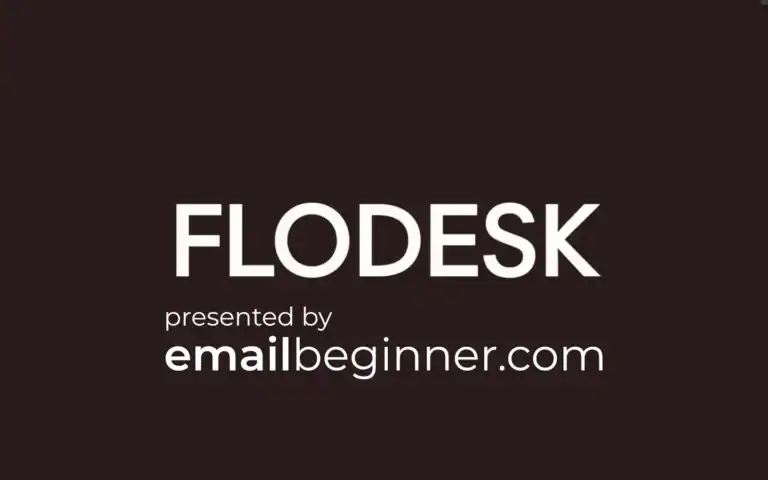How to Get Your First 100 Email Subscribers (Without Being Spammy)
Introduction: The First 100 – A True Milestone for Any Creator
Building an email list often feels like shouting into the void, doesn’t it? You know everyone says “the money’s in the list,” but going from zero to even a handful of subscribers can seem like an uphill battle. It’s tough to figure out where to start, and nobody wants to annoy people with spammy tactics just to get a few names. That first 100 email subscribers? That’s not just a number; it’s a monumental milestone. It proves people actually want what you’re offering, and it lays the bedrock for your communication empire.
At emailbeginner.com, we believe every creator deserves to build a thriving audience without resorting to pushy or unethical methods. This guide is all about getting those initial subscribers through genuine value and smart strategies. We’ll walk you through actionable steps to attract your first 100 (or more!) engaged email subscribers, setting you on a path to sustainable growth. You don’t need a massive budget; you just need a good plan and some elbow grease.
Why It Matters: Why Those First 100 Subscribers Are Gold

Those first 100 aren’t just early adopters; they’re your most crucial champions. They represent your initial validation, your core audience, and the proving ground for your content and offers.
Here’s why this milestone is so important:
- Proof of Concept: Getting 100 people to actively opt into your list proves that your niche, your content, or your product resonates with someone. It means there’s demand for what you’re doing. This is a massive confidence booster, and it ain’t just for you.
- Building a Foundation: This small, engaged group forms the foundation of your future audience. They’re often the most passionate, most likely to share your work, and most willing to give you feedback. They become your early adopters and advocates.
- Learning & Iteration: With 100 subscribers, you have enough data to start learning. What emails do they open? What links do they click? What content do they respond to? This feedback loop is invaluable for refining your messaging and offers before you scale.
- Monetization Potential (Even Small): Even a list of 100 engaged subscribers can lead to sales, especially if you’re offering a valuable product or service that truly helps them. These are your warmest leads.
- Algorithmic Signals: For platforms like Google and social media, a growing, engaged email list (and the activity it generates, like sharing) can indirectly signal relevance and authority, potentially boosting your reach.
emailbeginner.com was built to help users like you make smarter decisions with confidence. And building an email list is one of the smartest decisions you can make.
The Strategy: How to Get Your First 100 Subscribers Ethically & Effectively
Forget those sketchy “buy email lists” schemes or annoying pop-ups that hound visitors. We’re talking about attracting subscribers who want to be there. This is about value, not volume.
1. Create an Irresistible Lead Magnet
This is your #1 tool. A lead magnet is a valuable freebie you offer in exchange for an email address. It has to solve a specific problem or deliver a quick win. The more relevant and valuable it is to your ideal audience, the higher your conversion rate will be.
Ideas for irresistible lead magnets:
- Checklist: “The 7-Step Blog Post Promotion Checklist”
- Mini-eBook/Guide: “Your First 1,000 Words: A Fast Start Guide”
- Template: “Email Newsletter Content Calendar Template”
- Resource List: “Top 10 Free Tools for Building Your Email List”
- Mini-Course (Email-based): “3-Day Crash Course: Mastering Your First Email Campaign”
Make sure your lead magnet is directly related to your niche and the content you’re already creating. If your content is about email marketing, offer a guide to email deliverability. Don’t create something completely unrelated. Our How to Turn Your Blog Posts into Lead Magnets article shows you how to whip these up fast.
2. Optimize Your Website’s Opt-in Forms
Once you have your lead magnet, you need to make it easy for people to get it. Your website is your prime real estate for this.
- Content Upgrades: Offer your lead magnet within highly relevant blog posts. If a post talks about email subject lines, offer a “Subject Line Cheatsheet” inside that very post. These convert incredibly well because the offer is hyper-relevant to what the reader is already consuming.
- End-of-Post Calls to Action: Include a clear, compelling offer at the end of every relevant blog post. Make it obvious what readers will get.
- Dedicated Landing Page: Create a specific, focused page just for your lead magnet. This page should have no distractions – just the lead magnet’s benefits and an opt-in form. Link to this page from everywhere.
- Sidebar or Footer Forms: While less effective than content upgrades, these provide consistent visibility.
- Pop-up Forms (Used Wisely): Not all pop-ups are annoying. Exit-intent pop-ups (appearing when a user is about to leave) or scroll-triggered pop-ups (appearing after a user has scrolled a certain percentage of the page, showing engagement) can be highly effective without being overly intrusive. Tools like OptinMonster can help here.
Keep your forms simple. Only ask for the email address (and maybe first name). More fields mean lower conversions. People won’t fill out a long form for a freebie.
3. Leverage Your Existing Audiences (Even Small Ones)
You probably have an audience already, even if it feels tiny. Don’t underestimate it!
- Social Media: Share your lead magnet with a direct link to your landing page on all your active social media platforms. Tell people why it’s valuable. Don’t just paste a link; explain the benefit.
- Personal Network: Tell friends, family, and colleagues. They’re often your first cheerleaders. Ask them to share if they find it valuable.
- Online Communities: If you’re active in relevant Facebook groups, Reddit communities, or forums, share your blog post (which contains the lead magnet offer) only if it’s genuinely helpful and allowed by the community rules. Don’t just spam links. Be a contributing member first.
4. Create Engaging Content (That Naturally Leads to the Magnet)
Your blog posts themselves are key to getting subscribers. They need to be valuable enough that readers want more from you.
- Solve Problems: Write articles that address specific pain points or answer common questions your target audience has.
- Provide Actionable Advice: Don’t just describe; show readers how to do something.
- Be Consistent: Regular, high-quality content keeps people coming back and signals to Google that your site is active and authoritative.
The better your regular content, the more likely someone is to trust you enough to give you their email address for a lead magnet. It’s like dating; you show you’re trustworthy before asking for a commitment.
5. Collaborate (If Possible)
Once you have a few pieces of content and a solid lead magnet, consider collaborating with others in your niche.
- Guest Posting: Write a guest post for another blog in your niche. Include a link back to your lead magnet landing page in your author bio. This exposes you to a new, relevant audience.
- Joint Webinars/Giveaways: Partner with other creators to co-host a webinar or a giveaway. Both promote each other’s lists.
6. Consider a Small Ad Spend (Optional, But Effective)
If you have a small budget, even $5-$10 a day on Facebook Ads or Google Ads can accelerate your list growth. Target your ideal audience with ads promoting your lead magnet. This is a faster way to get those first 100 if you’re struggling with organic reach alone. You can target specific keywords on Google or demographics/interests on Facebook.
Getting your first 100 email subscribers is more than achievable without being spammy. It takes a clear strategy, consistent effort, and a genuine commitment to providing value. Focus on solving your audience’s problems with your content and lead magnet, make it easy for them to opt-in, and promote your offer where your ideal readers hang out. Those first 100 aren’t just names on a list; they’re the enthusiastic beginning of your thriving online community. Don’t underestimate ’em.
FAQs
How long does it typically take to get the first 100 subscribers?
The time it takes to get your first 100 subscribers varies greatly depending on your traffic volume, lead magnet quality, promotion efforts, and niche. Some creators might achieve it in a few days or weeks with strong promotion, while others might take a few months of consistent effort. Consistency is more crucial than speed.
Do I need a website to start building an email list?
While having a website is ideal for long-term growth and SEO, you don’t strictly need one to get your first 100 subscribers. Many email marketing platforms (like AWeber or ConvertKit) offer free landing page builders that allow you to create a dedicated page for your lead magnet and collect emails without a full website.
What is a “cold audience” versus a “warm audience” in email marketing?
A “cold audience” consists of people who don’t know you yet, often found through ads or search. A “warm audience” consists of people who already know or trust you, like existing blog readers, social media followers, or referrals. Lead magnets are typically used to convert cold traffic into warm leads (subscribers).
Should I offer multiple lead magnets when I’m just starting out?
It’s generally recommended to start with one highly compelling lead magnet that targets your core audience’s biggest pain point. Once you’ve optimized that one and started consistently converting, you can then create additional lead magnets tailored to different segments or content topics. Don’t spread yourself too thin initially.
How often should I email my new subscribers once they sign up?
After a new subscriber opts in, it’s common to send an immediate welcome email (delivering the lead magnet) followed by a short welcome sequence (e.g., 3-5 emails over a week or two) that introduces you, sets expectations, and provides more value. After that, a consistent sending schedule (e.g., weekly or bi-weekly) is generally recommended to maintain engagement.
Written by The Editorial Team. Learn how we write and test all our content for accuracy.



